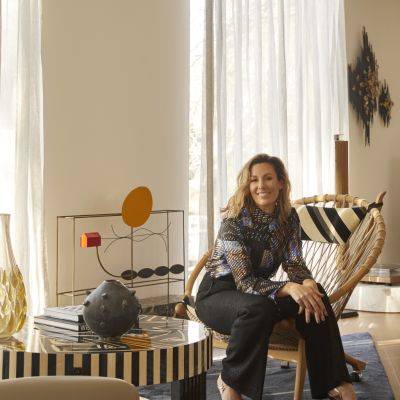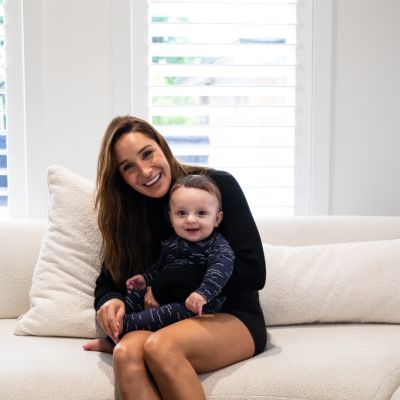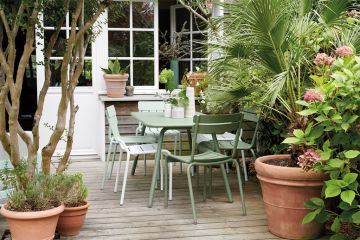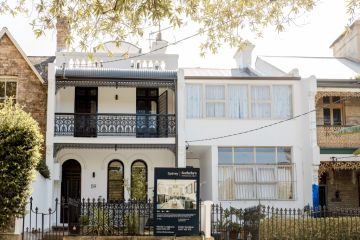Read the room: Brahman Perera designs layered and considered spaces
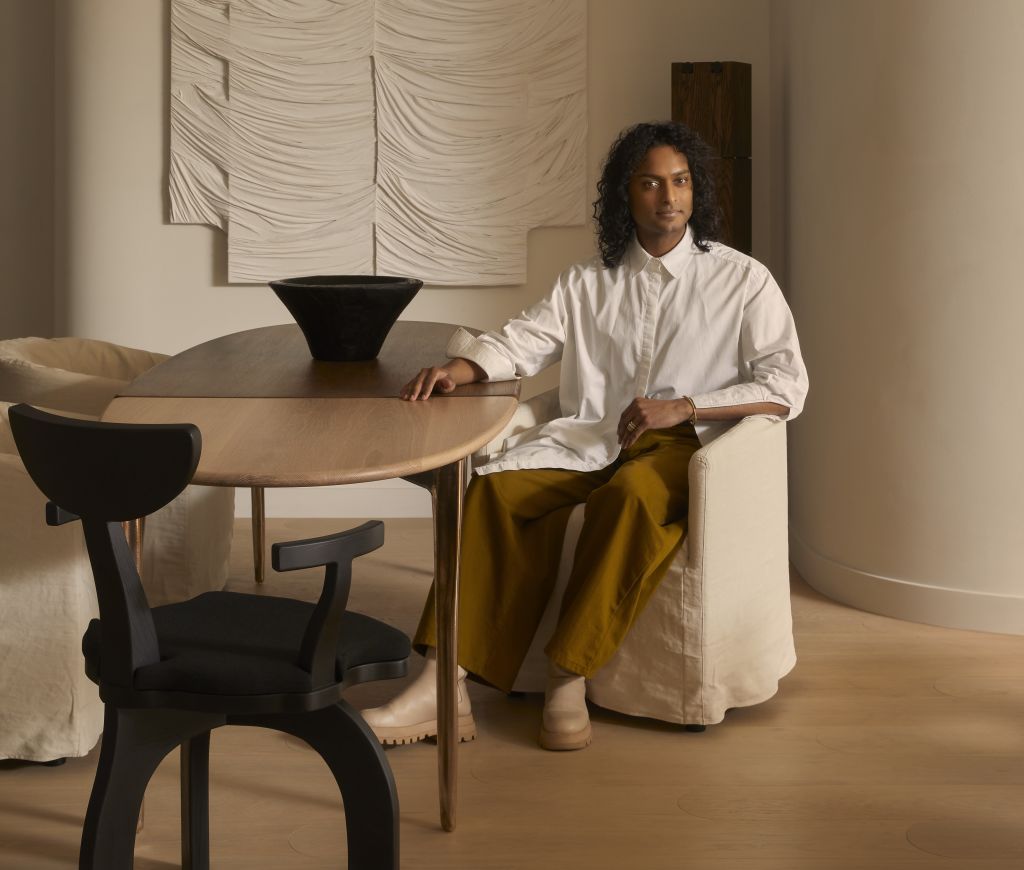
When Brahman “Brem” Perera visits a prospective client’s home for the first time, he makes what must seem to many like a shocking request. “I ask them not to clean up before I come – just to leave things as they usually are,” he tells Broadsheet. Like a detective at a very stylish crime scene, he’s then able to pick up clues on the client and how they live. “I’ll suddenly see, for instance, piles of laundry, and realise there’s nowhere for them to do it.”
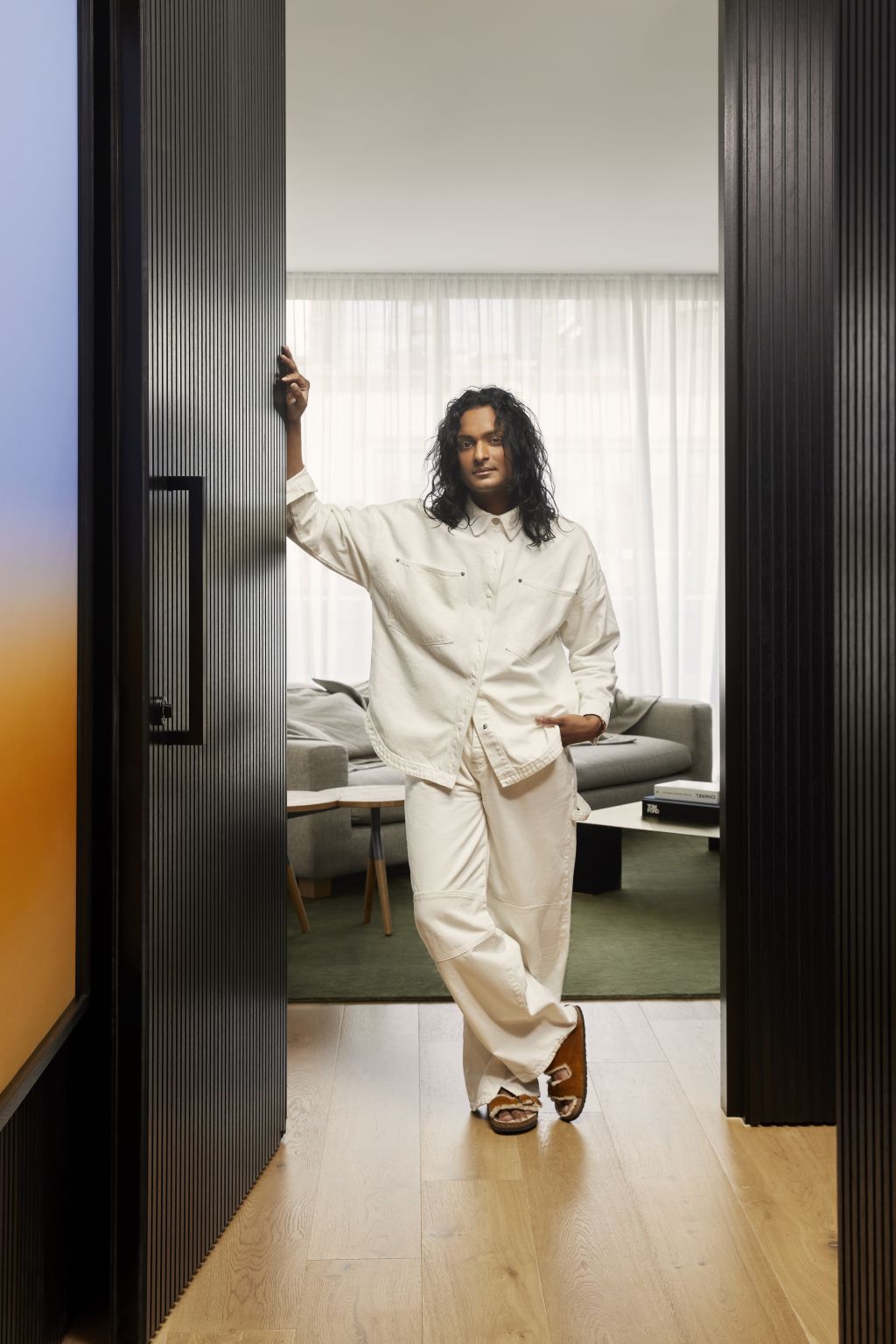
The interior designer, whose work spans residential, retail and hospitality, sees himself essentially as a problem solver. And that’s a slow process, involving lots of observation, talk and trust. “The key thing with any project is to pre-empt problems – or offer solutions – to things the client can’t see themselves.”
This approach, Perera says, comes in part from a long stint studying architecture (he has a master’s degree from RMIT) and his time working at influential design firms Fiona Lynch and Hecker Guthrie, before [going out on his own] in 2020.
There’s the intensely practical side of the process: a case in point is the [Terra House] in Hawthorn, a project Perera inherited, originally to help with the art. “It was a twin build, with the main project being the house for a family with two young daughters and, next door, a house for the parents who were moving from somewhere much larger. They had a lifetime’s worth of memories and beautiful art that we needed to find homes for.”
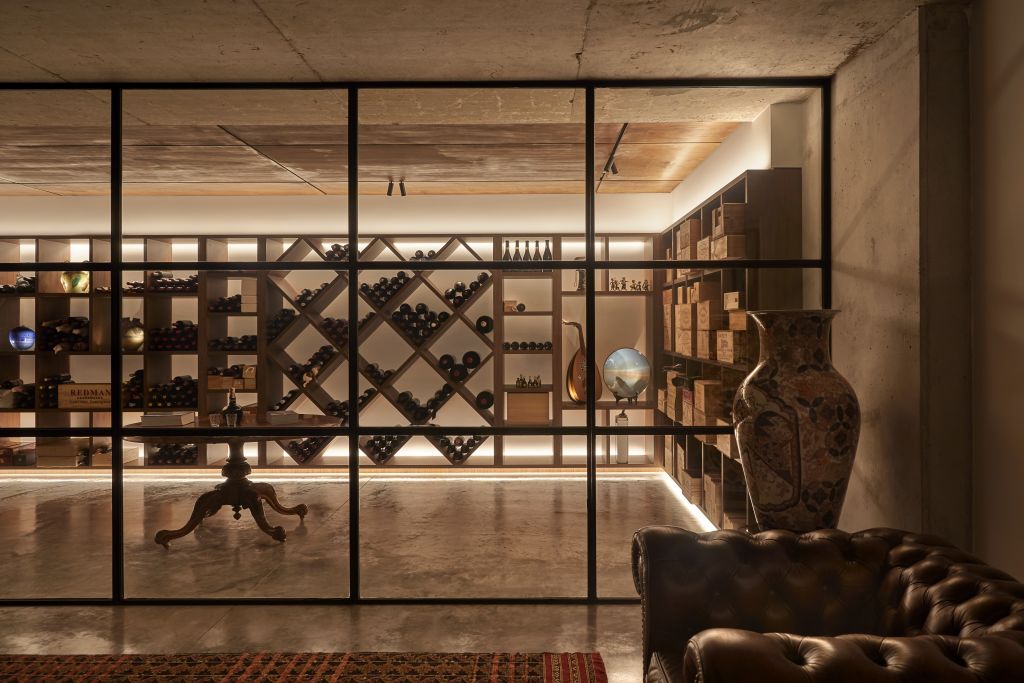
Working his way through the family’s art collection, he asked where they were planning to hang one very significant piece. “Everyone just sat there looking at each other – there literally wasn’t a wall large enough for it. We had to entirely reshuffle the layout to accommodate it.”
Then alongside the practical is a focus on the importance of memory, and creating a home that truly represents the people who live there. It’s irrelevant, Perera says, what he thinks about their belongings. “It’s really about whether the client likes them. Part of my process involves celebrating the stuff my clients have invested in, whether that’s with money or with emotion.
“Often they’ll ask me if they should get rid of everything, and I think, ‘Gosh, I would die if I had to do that.’ Where’s that ugly vase you bought when you were backpacking? You want to keep that. Then, the question is, how do we celebrate it? Does it go on a beautiful shelf or on a plinth? Suddenly, it’s really special.”
In this way, the spaces become “layered and considered and sincere and timeless, but not necessarily a particular style”, Perera says. “I think it always ends up looking like my work through osmosis, but ultimately I don’t live in someone’s house – I have to design for what they need.”
In his own home, the designer tends “to look through the lens of hospitality” – hardly surprising given his partner is Entrecôte restaurateur Jason Jones. “If you come to my house for dinner, there’ll be music on, you’ll be welcomed at the door, I’ll have a drink in hand for you and take your coat. A lot of people appreciate it but, that being said, it’s not for everybody.”
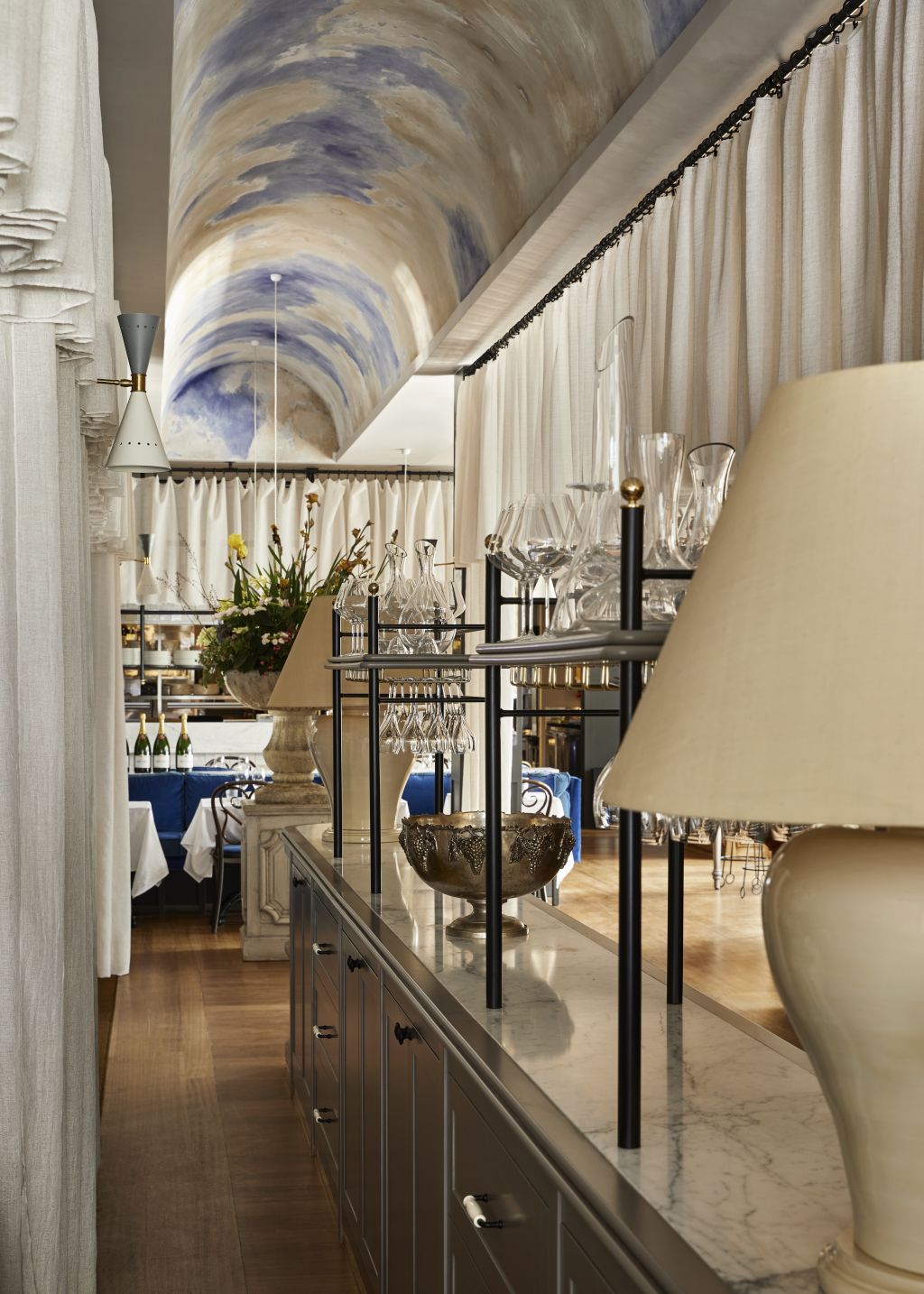
Perera designed the interiors for both [Entrecôte] iterations (in Prahran and South Yarra), leaning into classic French styling with the odd luxe-bohemian twist. Currently, he and Jones are working on the fit-out for their new Sri Lankan diner project, [Hopper Joint], set to open later this year on Greville Street.
His interest in design started in childhood, he says. “My heritage is Sri Lankan. My parents are from Colombo – my mum’s Hindu and my dad’s Catholic. There’s a lot of amazing culture that came with them, and that they imbued in myself and my brother. I was very drawn to it – it’s an exciting, colourful culture, and I definitely reference it in my work.”
As a young kid, he was also making things. “Everything: birthday cards, ornaments for Christmas, gifts for people … A lot of that came from our next-door neighbours, an elderly couple we called Auntie Elsa and Uncle Ray. She was a milliner, and had a couple of rooms devoted to her trade – that was such a treasure trove for me … She was an amazing part of my life, and I often think of her.”
Perera’s background can reveal itself in unexpected ways. For one hospitality project, a colour scheme started life in a statue of the Virgin Mary that stands in his family home. “It was sort of a blush pink and that really beautiful shot-silk royal blue. Looking at it, I could see how the colours worked together.”
Inspiration, he says, comes from engaging with the world as much as possible. “I go to the ballet and theatre. My partner plays the piano very well, so we see a lot of live music.” It can come, too, from travel or old photography books – he’s particularly drawn to the work of glamorous mid-century designer and photographer Cecil Beaton.
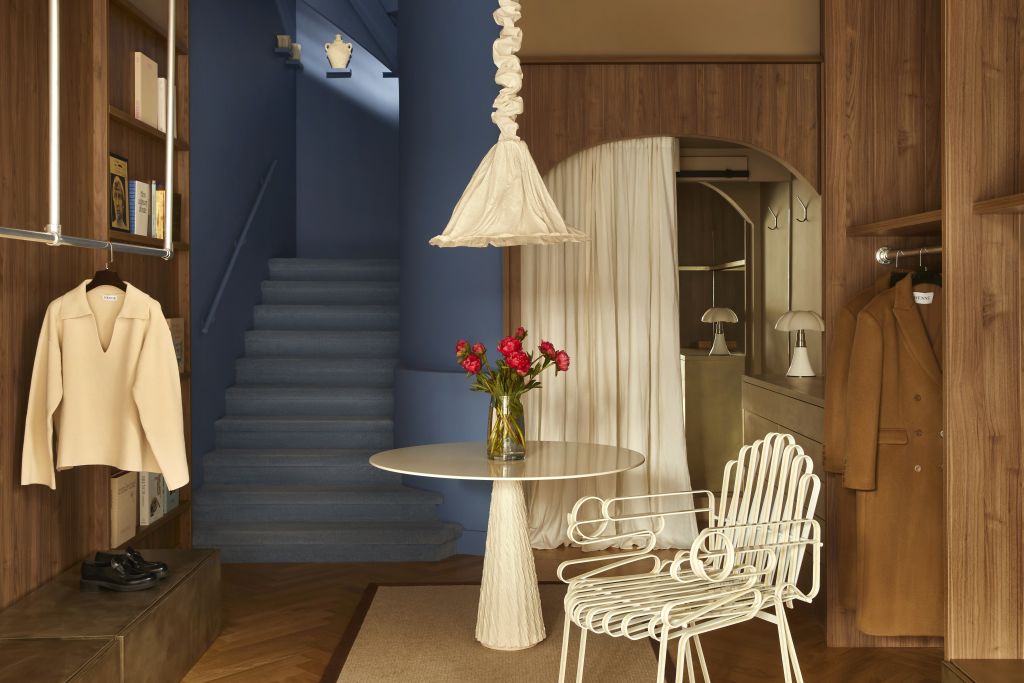
Perera generally finds he needs downtime to “let his brain rest” and allow ideas to develop. “I’ll see something I like and then mull over it for a while. I’ll try to work out what I like about it, and what I could do to make it more interesting.”
This slow contemplation brings tangible results. When designing the [Prahran shopfront] for fashion label Henne, he kept thinking about “amazing seagrass squares – the ones from all our childhoods”. The idea of putting them on the floor “didn’t make any sense to me in that environment, but to flip them as a wall treatment felt so rich and textured, and really cool”. Like a lot of Perera’s work, the outcome is tactile and bold and nostalgic, while effortlessly up to date.
Being completely hands-on, and taking the time to think and develop, encourages Perera to keep his business “small and nimble”, he says, and find new ways of creating. He’s experimenting with lighting design and debuted as part of a group show at Oigåll Projects during Melbourne Design Week this year. He’s taken on the challenge of designing for new builds at Mirvac’s new Albert Park project. And he’s also keen to do some large-scale murals, and have time for more painting.
The hope for all his output is that “it says something”, Perera explains. “That it inspires conversation, whether good, bad or other. That’s the aim, that’s the goal.”
This article first appeared in Domain Review, in partnership with Broadsheet.
We recommend
We thought you might like
States
Capital Cities
Capital Cities - Rentals
Popular Areas
Allhomes
More
